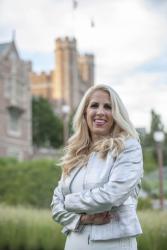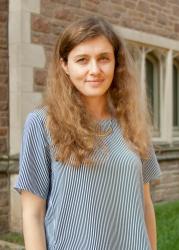Savings and assets play an important role in shaping the financial security of individuals and families. Accumulation of sufficient assets can help households manage their day-to-day expenses, cope with financial emergencies, make long-term investments like higher education and homeownership, and can ultimately facilitate intergenerational economic mobility.
One way to help families build long-term assets is by offering Child Development Accounts (CDAs). CDAs are tax-advantaged savings or investment accounts opened for newborn or young children to both help them build assets from an early age and facilitate long-term savings behaviors. The design of CDAs depends on the program and may differ in their eligibility requirements, contribution amounts, program progressivity, and other features. Evidence from the United States indicates that CDAs can increase the amount of savings accumulated in college-specific savings accounts and improve parental expectations about their children’s educational prospects, while research from Uganda shows that families benefiting from a matched savings program tend to experience better health and psychological outcomes. Furthermore, research shows a positive association between asset ownership and expectations about one’s future; subsequently, greater optimism about the future correlates with better future outcomes.
In 2017, Israel rolled out a universal CDA program, the Saving for Every Child Program (SECP), to address the persistent poverty in the country. Administered by the National Insurance Institute of Israel, the SECP aims to facilitate asset accumulation and child development investments by making monthly deposits into savings vehicles for all Israeli children (in the child’s name) up to the age of 18. It is the first CDA program in the world in which the government makes regular contributions for all children. As such, it stands as an important example to other countries seeking to establish universal CDAs in order to facilitate increased economic mobility in their populations.
As part of the program, the government contributes 50 Israeli shekels (around $14-15) each month to every SECP account in the child’s name. Moreover, families have an option to actively enroll in the SECP and make several choices concerning the way assets accumulate in the accounts. First, parents can choose to transfer 50 shekels from their monthly child support income to their SECP account, functionally doubling the monthly contribution. Second, they can choose to allocate SECP deposits into one of several savings accounts or investment funds. Funds in savings accounts generally earn relatively low returns over the long run; long-run returns on investment funds are generally higher, though they vary depending on the specific fund selected. If parents do not actively enroll in the SECP, their children are automatically enrolled in the program’s default selections set by the government. In most cases, this default selection is a low-yield investment fund. In addition, children receive several payments in their SECP accounts at different ages that aim to encourage children and their parents to keep money in the account for a longer period of time. SECP savings can be withdrawn only after a child reaches 18 years of age, except in cases of a child’s severe illness or death. Parental permission is required to withdraw funds before the age of 21. The total financial benefits of the program can be profound, but they vary by the investment choices of families.
Our research examined trends in enrollment and participation in the SECP during the first six months of the program’s implementation. We assessed the extent to which various household demographic and financial characteristics were correlated with the decision to actively enroll in the SECP, deposit an additional 50 shekels into SECP funds, and select an investment fund rather than a savings account. We highlight three main insights:
- The initial engagement with the program was high. Two-thirds of Israeli households actively enrolled in the SECP rather than relying on the default option, a rate that is higher than that observed in other child savings account programs. Furthermore, of those who made an active choice, two-thirds transferred an additional 50 shekels from their child support into their child’s SECP fund and slightly under two-thirds chose investment funds rather than savings accounts.
- Religious/ethnic majority households, households with higher wages, higher education levels, and greater levels of employment tended to engage with the program in ways that may yield higher economic returns in the future.
- The differences by household religion/ethnicity were particularly striking. Compared to non-ultra-Orthodox families—religious/ethnic majority households—Arab Israelis were less likely to actively enroll in the program. Once enrolled, Arab Israelis were substantially less likely to deposit an additional 50 shekels and select an investment fund, favoring lower-yield savings accounts. At the same time, ultra-Orthodox families were significantly more likely to actively enroll in the program compared to non-ultra-Orthodox families, which was likely facilitated by targeted outreach by the government to ultra-Orthodox rabbis. Once enrolled, ultra-Orthodox families were less likely to deposit an additional 50 shekels into SECP accounts and tended to select lower-yield religious investment funds rather than higher-yield investment funds preferred by non-ultra-Orthodox families. These results held even after accounting for financial knowledge and intrinsic personality values.
Our work provides several implications for the design and implementation of the SECP, as well as other CDA-type programs.
- Our results suggest that economic disparities may be addressed more effectively if the SECP were structured in a progressive way.
- Targeted, behaviorally informed outreach efforts could help boost SECP participation among more vulnerable populations. As there is suggestive evidence that government engagement with religious leaders likely increased program enrollment, more generalized outreach campaigns through social service organizations, hospitals, and vaccination clinics may also be effective.
- The nature of existing SECP communication channels (e.g., mailed letters to parents of each newborn) and the popularity of online enrollment processes suggest that there is the potential to apply behavioral economics techniques to drive program enrollment and savings deposits.
The SECP provides a blueprint for establishing CDA programs in other countries, including the U.S., where legislators have previously proposed a bill that would establish an account for every American child at birth. The appropriately designed accounts may hold a great promise to improve the outcomes of program beneficiaries, and particularly those of more vulnerable populations who tend to have more precarious financial lives, lower future prospects, and less confidence in their future. Israel’s CDA program is the first in the world to provide recurring monthly funds to accounts for each child regardless of whether their parents are making an effort to enroll. Learning from the case of the SECP can demonstrate the degree to which universal programs can enhance the financial security of households, including that of more economically vulnerable families.
Disclaimer: This research reflects work conducted by the authors, and does not necessarily represent the views or opinions of the National Insurance Institute of Israel.
Katherine Havlovic assisted with the writing of this blog.
The Brookings Institution is committed to quality, independence, and impact.
We are supported by a diverse array of funders. In line with our values and policies, each Brookings publication represents the sole views of its author(s).







Commentary
Enrollment and participation trends in Israel’s universal child development account program
September 23, 2020